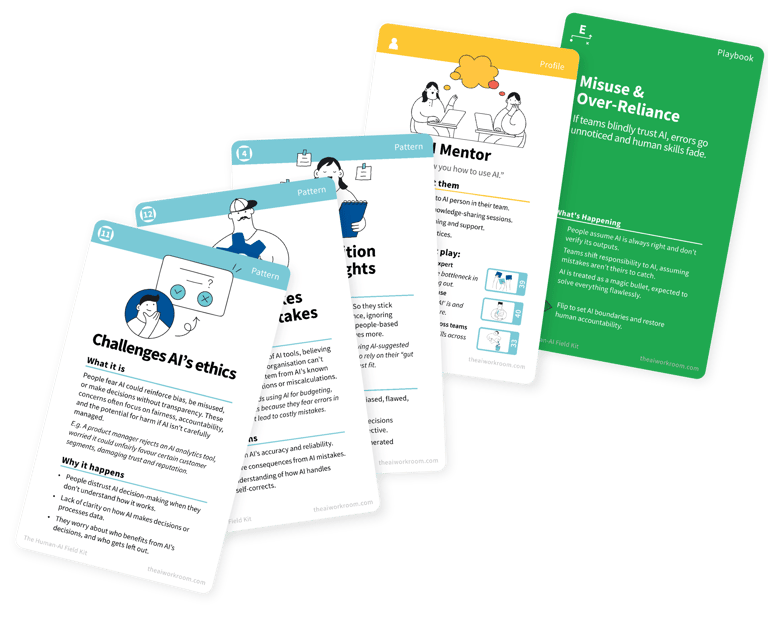The AI Dependent
BEHAVIOUR PROFILEBEHAVIOUR KIT
Lauren Kelly
They treat AI like a calculator: input, output, move on. It feels safe and easy, speeding delivery and scaling fast. But that comfort hides over-reliance. Without critical thinking, context gets lost, errors creep in, and teams follow blindly instead of leading with intent.
How to spot them
Signature behaviours:
Uses AI as default – Every task, prompt, or message goes through a tool.
No review instinct – Rarely checks or edits outputs.
Avoids decisions – Prefers AI guidance over personal judgment.
Automates everything – Chooses speed and ease, even when oversight is needed.
Works solo with AI – Bypasses the team and leans on tools instead.
What this means for you:
They boost speed and consistency, especially in routine tasks.
They normalise AI use, making others feel like they’re behind.
But they also potentially weaken team trust and impact. If AI gets it wrong, they won’t catch it.
Over time, they risk losing creative input, critical thinking, and collaboration.
The challenges they create
⚠️ Blind trust – Assumes AI is always right, even when it clearly isn’t.
⚠️ Skill erosion – Relies on AI so much, they stop developing their own judgment.
⚠️ Missed context – Ignores team input or real-world nuance AI can’t see.
⚠️ Output over outcome – Focuses on finishing, not on whether it’s right.
What to do
Interrupt autopilot
Add subtle review nudges like “Does this feel right?” or “Anything missing?”
Build in checkpoints before final outputs go live.
Use reflection prompts to reconnect them with their own expertise.
Put them in the reviewer seat
Ask them to audit or critique AI outputs instead of just using them.
Run sessions where they compare AI vs human work to spot differences.
Highlight examples where human insight made the real difference.
Bring the team back into the loop
Pair them with teammates to co-review AI-generated work.
Encourage asking others, not just AI, for feedback or input.
Create shared checkpoints to blend team decisions with AI speed.
Methods that use the profiles
More profiles to explore
Get all 42 patterns and more in the HAP Behaviour Kit and HAP system to run
A digital card kit that spots human friction, flips the behaviour, and turns AI skeptics into everyday users.
Works remote, hybrid, or in‑room.
£765
(+ applicable taxes)


Human-AI Performance
By Lauren Kelly
Contact: lauren@alterkind.com
© 2025 Alterkind Ltd. All rights reserved.
Human-AI Performance™ is a proprietary methodology developed by Alterkind Ltd using our Behaviour Thinking® framework. All content, tools, systems, and resources presented on this site are the exclusive intellectual property of Alterkind Ltd.
You’re welcome to use, share, and adapt these materials for personal learning and non-commercial team use.
For any commercial use, redistribution, or integration into client work, services, or paid products, please contact lauren@alterkind.com to discuss licensing terms.
Icons by Creative Mahira, The Noun Project.
Thanks to Nicholas Edell, Valentina Tan and multiple VPs implementing AI for your feedback during development.
LICENSE
Based on work at alterkind.com
For commercial licensing contact: lauren@alterkind.com
